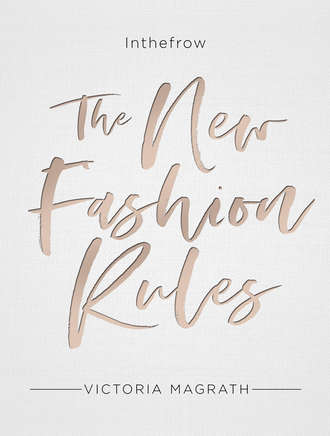
Полная версия
The New Fashion Rules: Inthefrow

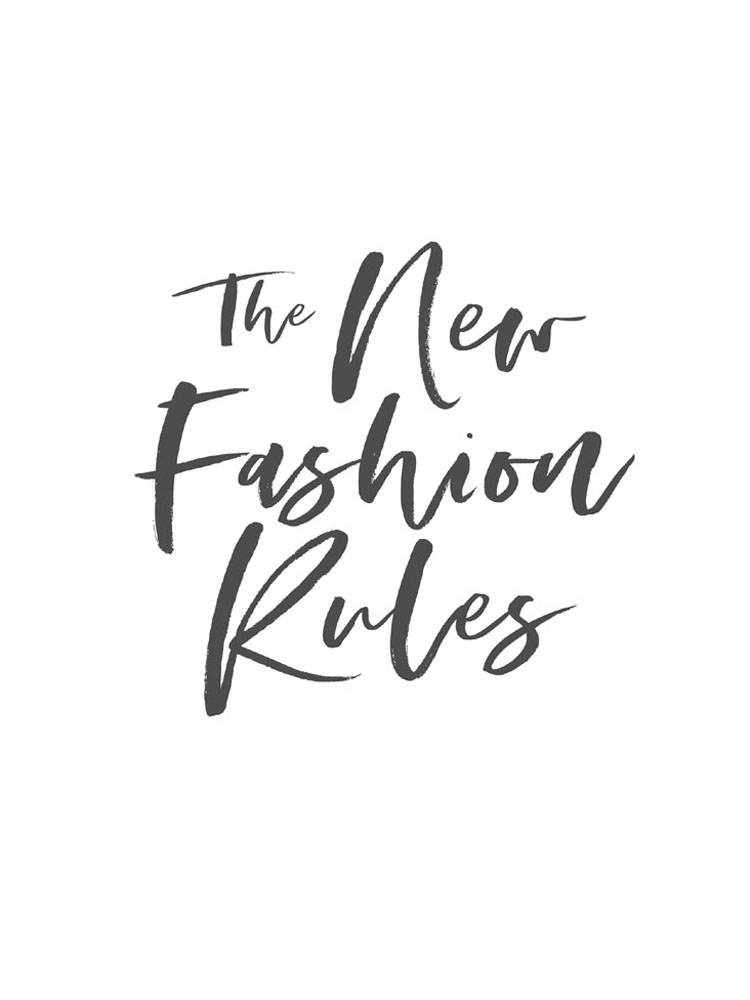

Copyright
HarperCollinsPublishers
1 London Bridge Street
London SE1 9GF
www.harpercollins.co.uk
First published by HarperCollinsPublishers 2018
FIRST EDITION
© Victoria Magrath 2018
Illustrations © Judith van den Hoek 2018
Cover design by Claire Ward © HarperCollinsPublishers 2018
A catalogue record of this book is available from the British Library
Victoria Magrath asserts the moral right to be identified as the author of this work
All rights reserved under International and Pan-American Copyright Conventions. By payment of the required fees, you have been granted the nonexclusive, non-transferable right to access and read the text of this e-book on screen. No part of this text may be reproduced, transmitted, downloaded, decompiled, reverse engineered, or stored in or introduced into any information storage retrieval system, in any form or by any means, whether electronic or mechanical, now known or hereinafter invented, without the express written permission of HarperCollins e-books.
While every effort has been made to trace the owners of copyright material produced herein and secure permissions, the publishers would like to apologise for any omissions and will be pleased to incorporate missing acknowledgements in any future edition of this book.
Find out about HarperCollins and the environment at www.harpercollins.co.uk/green
Source ISBN: 9780008305550
Ebook Edition © November 2018 ISBN: 9780008305567
Version 2018-10-23

(@harrison)
Dedication
For the fashion students, the enthusiasts, the creatives,
the bosses, the marketers, the online shoppers, the
clothing admirers, the fashion show attendees, the writers
and the devoted fans of the fashion world.
Your passion is my passion. This one’s for you.

(@harrison)

(@harrison)
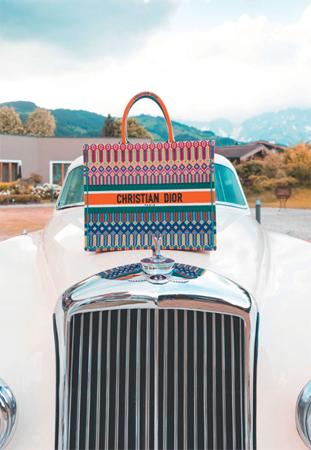
(@inthefrow)
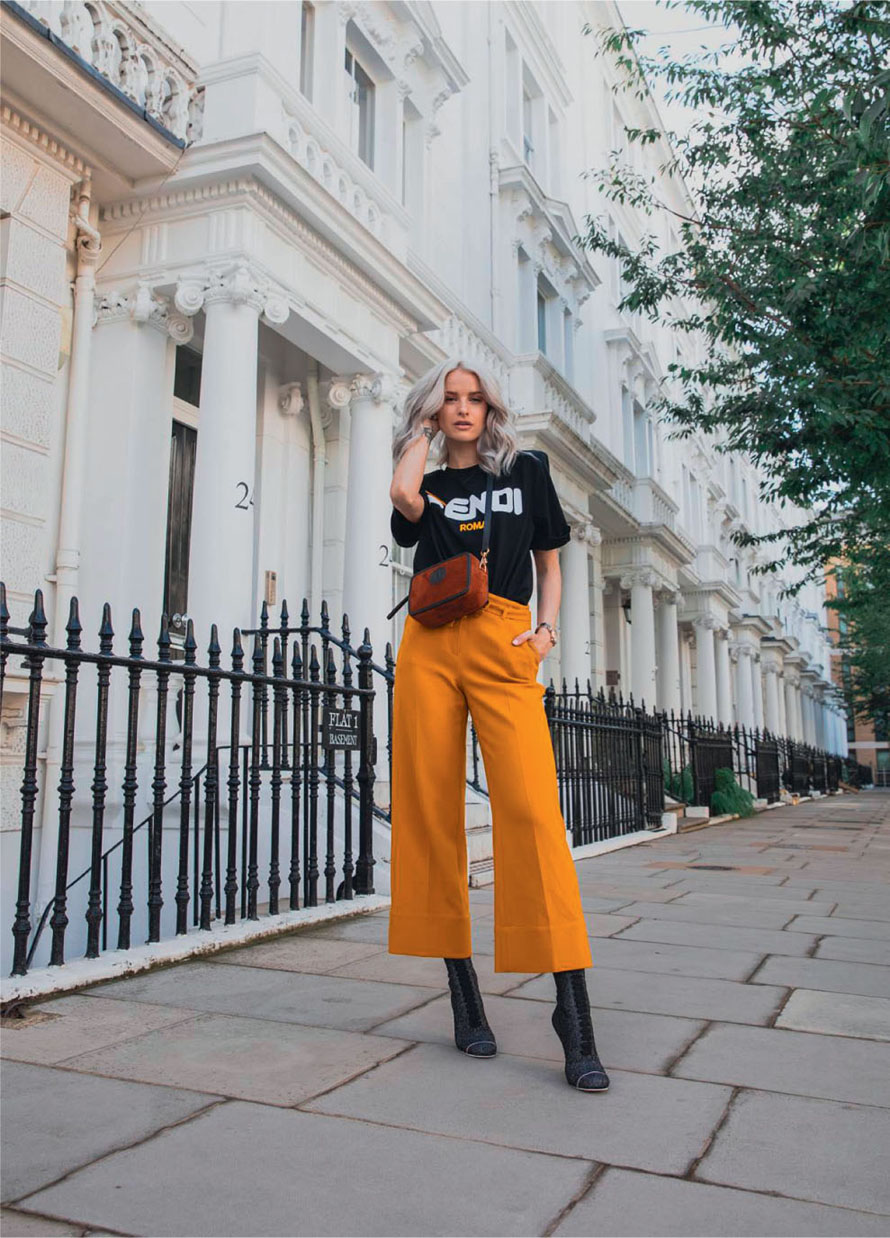
(@harrison)
Contents
Cover
Title page
Copyright
Dedication
Introduction
Rule 1: Be accessible and easy to find
1. Get ready to shop the globe
2. ASOS changes the online shopping game
3. Net-A-Porter rides the dotcom boom
4. Luxury for the masses
5. Global connections for the smallest brands
6. Inspiring a love of fashion
7. Retail goes mobile
8. Kate sells out the Burberry trench
9. Michael Kors is first to sponsor an Instagram ad
Rule 2: Be aware of the impacts
10. Death of the high street
11. Fast fashion piles up
12. Continuous sales are killing seasonal trends
13. Siri is stalking our shopping habits
14. Wear it once, resell it tomorrow
15. Alexander Wang sues the counterfeits
Rule 3: Be social
16. The fashion blogging evolution
17. The world gets hashtagged
18. Fashion Pinspiration for the masses
19. Vogue starts a social shopping trend
20. Instagram: the good, the bad and the ugly
21. The creative directors conquer Instagram
22. The clothing-haul obsession
23. The fashion news goes viral
Rule 4: Be culturally aware and diverse
24. Admiring all shapes and sizes
25. #TimesUp
26. A cry for inclusivity and diversity
27. Ban the fur
Rule 5: Be innovative
28. NikeID and the new customisation
29. The fashion catwalk in your bedroom
30. Sophia Amoruso launches Nasty Gal
31. #CastMeMarc
32. Rebecca Minkoff leads the connected-store revolution
33. Virtual models in starring roles
Rule 6: Be the first to adapt
34. Fitness got trendy
35. Netflix merchandise gets hyped
36. The influencers design the collections
37. Cara photobombs the runway
38. The super-bloggers get the gig
39. Burberry redefines the rules of the catwalk
40. Susie bursts the fashion bubble
Last thoughts
Index of searchable terms
Acknowledgements
About the author
About the publisher
Introduction
Who decides what we wear, how we dress and the way we define ourselves through clothing? Is it us? Do we decide our own take on style and self-branding? Or is it our audience, the passer-by in the street, the person in front of us in the coffee queue or our latest follower on Instagram? The rules of the fashion game have changed, and we are all having to learn the new tips, tricks and rules to play it successfully.
We live in a world where the majority dress to fit in with societal norms, and our clothing can offer an insight into our status, character, interests and our sense of what’s appropriate and what’s not. As humans, we have always loved to fit into a group to feel a sense of belonging, but the recent evolution of the Internet has had the most dramatic effect on the way we dress today. It has transformed the way fashion is worn, consumed, sold and produced. The majority of us no longer buy clothing for our own personal enjoyment alone, but for the admiration of those who observe or follow us.
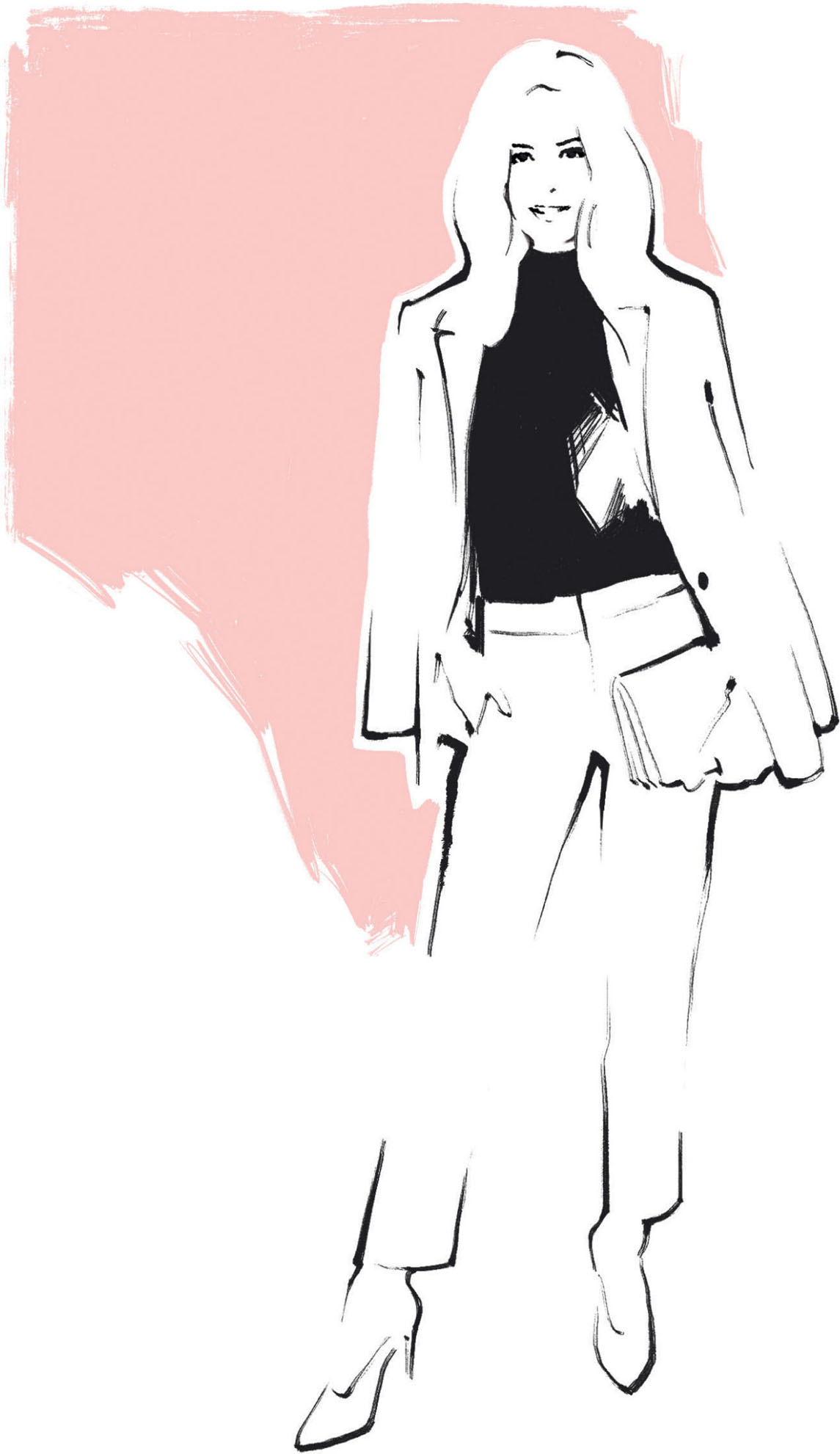
Online fashion retailing has fascinated me since it was kicked up a notch in the early 2000s. I studied for my fashion retail degree at the University of Manchester in 2007 and although online shopping was rising in popularity, lots of people were still dubious that it would ever stick. I was sitting in a branding lecture while my lecturer scoffed at the idea that people would ever risk buying such tactile items on their computer. She believed that buying clothing online would never take off, but I was already seeing a trend: brands were increasingly developing online stores and I knew it was only a matter of time before more people tried it out for themselves.
Before I had finished my degree, mobile-retailing was already a realistic proposition and within a small space of time, the thought of shopping on my mobile became somewhat normal. Retailers not only had an online store to sell their products globally, but they could now promote and sell them from every mobile phone in the world. The question at that point was how exactly could a brand entice people to buy from their mobile app, and what could they do to enhance their customers’ enjoyment and experience? I was intrigued, so I started a three-year PhD to answer that very question.
My thesis investigated the purchasing decisions, behaviours and emotions of the fashion consumer shopping on mobile apps. After three fun and interesting years, I graduated, added ‘Dr’ to my title and found out that mobile retailing would actually be far more lucrative and essential for retailers than we had initially expected (among a lot of other things, of course, but we don’t have all day). But my findings were borne out over the following eight years, backed up by stats published in 2017, stating that 58 per cent of ASOS’s sales came from mobile purchases, and 70 per cent of their web traffic came via mobile. I’m guessing their mobile site was pretty great … they must have read my PhD. *I’m joking.*
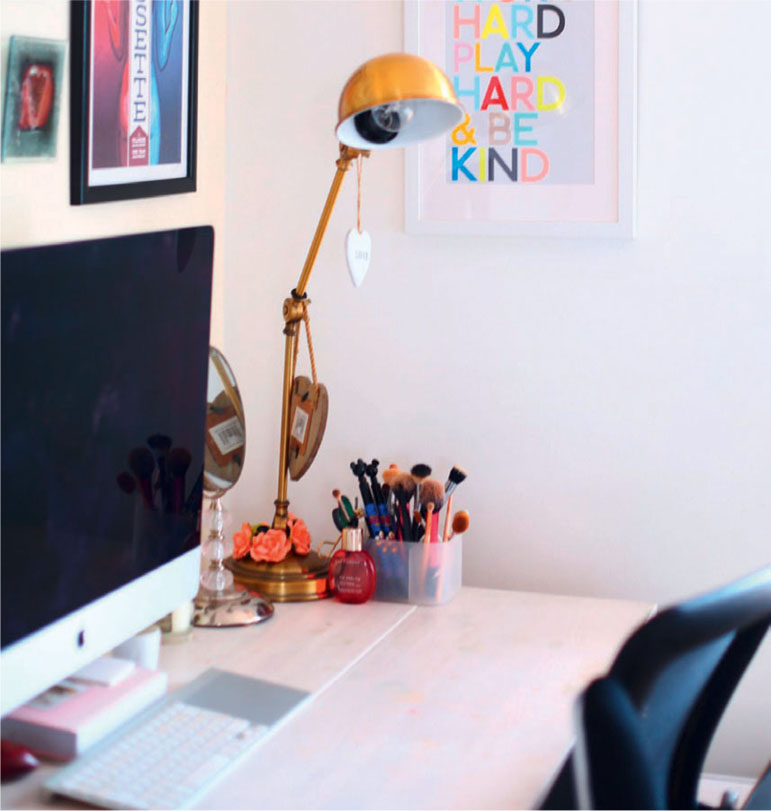
(@inthefrow)

(@cgstreetstyle)
But let’s get back to today, when online retailing is global and no longer solely dependent on the elite who have money to spend. Fashion and style inspiration are no longer being dictated by top models and society’s richest from their ivory towers – the latest trends are promoted by ordinary people from their bedrooms. New York blogger and photographer Scott Schuman was one of the first on the scene, documenting the outfits of ordinary people on the streets. His website, The Sartorialist, was the birth of what would soon become a wide-spread appetite for street-style imagery, and it acted as a catalyst for a new wave of street-style photographers, hungry for well-dressed folk. Now, fashion week shows are swarming with photographers falling over each other to get a snap of the best-dressed attendee – something that not everyone is happy about, but we’ll get to that later in the book. The Internet has democratised fashion, so that it’s starting to be led by the more relatable girl- or boy-next-door. They take selfies, write blogs and vlog to camera – and while the relationship between fashion and the world’s wealthiest people still exists, a broader range of social influencers are flooding the fashion scene.
After my PhD, I took up a lecturing position at the University of Manchester. But, armed with fresh information about a vastly growing industry, I wanted to write it all down, so I started a fashion, beauty and travel blog. Inthefrow – an abbreviation of in the front row – was the name of my bubble, where I offered my readers a portal to the latest clothing I loved, beauty products worth our money and trends to hit the catwalk. I wanted to create ‘the digital front row’ for a new generation of fashion-hungry readers. At that stage in my career I had no idea that one day my blog would enable me to sit physically on the front row, at shows like Dior, Victoria Beckham, Burberry and Julien Macdonald.
Blogging is one of the biggest additions to fashion media since monthly magazines. While the first female fashion magazine, The Ladies’ Mercury, appeared in London in 1693, fashion blogging as we know it only erupted in 2006, and has led to the creation of an entirely new career. The blog as a medium has turned a small number of ordinary writers into powerful and influential voices. In fashion, a select few have a reach of over 10 million followers – much larger than any print or fashion magazine – alongside running their own clothing labels, writing their own books and starring in advertising campaigns for some of the largest brands in the world. Bloggers have become brand ambassadors. They strut the catwalks of the most prestigious designers and adorn the covers of the most established magazines. Again, more of that later in the book.
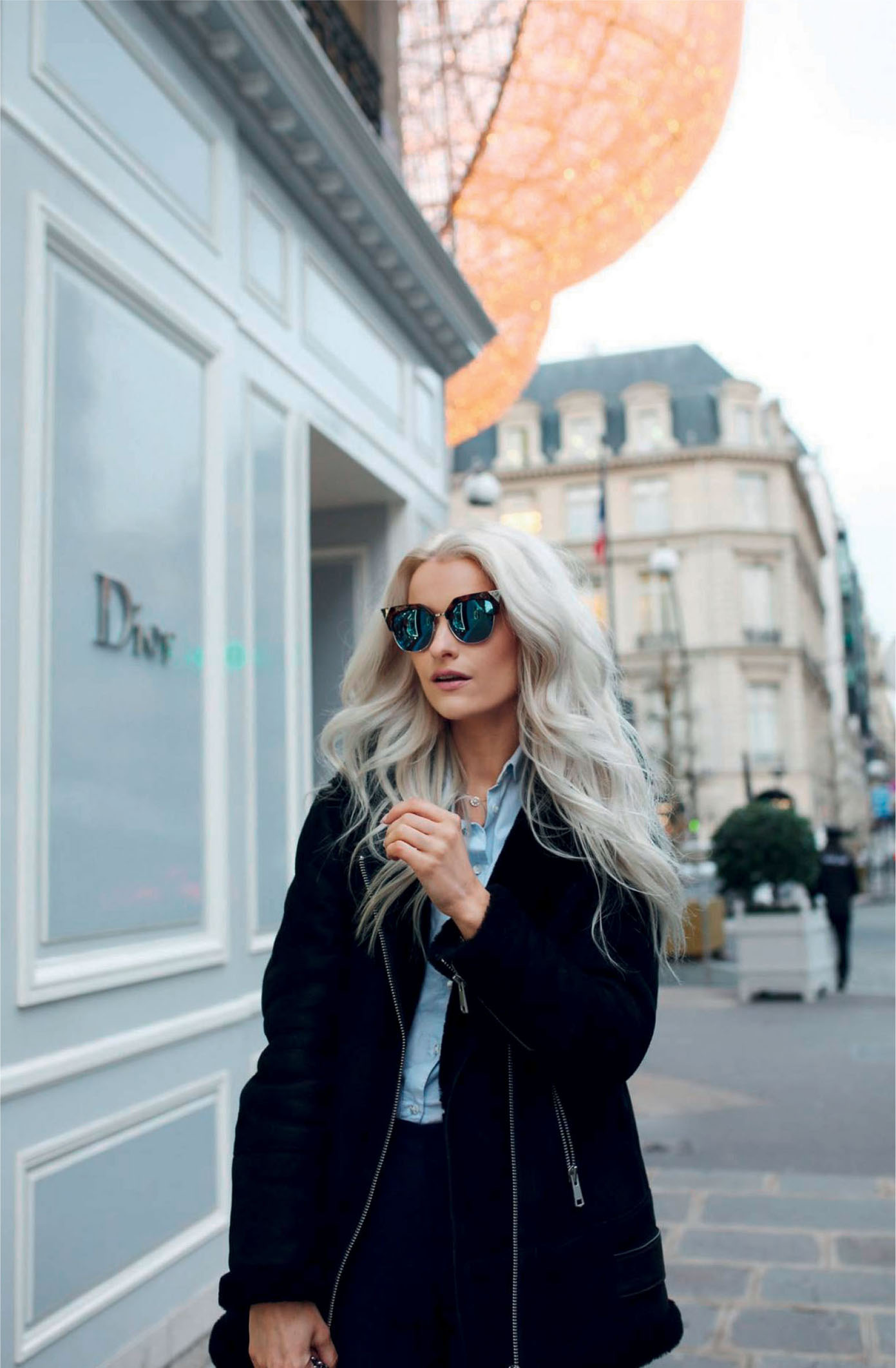
(@harrison)
I’m extremely proud to say, after six years in this business, that I’ve had a number of these opportunities and have collaborated with some of my favourite brands, both on- and offline. But I am still growing, learning and developing every day, because the evolution of the Internet, and how it shapes the fashion industry, never stops. We all have to continue to adapt to fit in with the new norms, the trend setters, the innovators and the latest innovations.
We’ve all seen enormous shifts in the way brands and retailers are running their businesses. Fashion is no longer solely consumed on the high street. I remember purposefully going clothes shopping on Wigan high street as a teenager, because unless you ordered from the Next catalogue, there was no other access to a new outfit for a Friday night. Back then you were confined to a handful of clothing stores in your local town or retail park, unless you ventured further afield to your nearest city for a broader range of brands and retailers. In today’s digitally-minded world, a customer can buy their clothing from a multitude of online touchpoints, at any time of the day, and have them delivered to their home or place of work within 24 hours. In the centre of London, clothing can now be bought and delivered to your door in as little as 90 minutes! This ubiquitous freedom has fundamentally transformed how clothes are advertised, sold and purchased, by everyone around the globe.

(@harrison)
So, how do you keep up? For consumers, followers, brands and the ordinary person in the street, there are new rules to follow if you want to stay ahead of the fashion game. So much has happened in recent years, from #TimesUp to virtual-reality models, the cry for inclusivity within the industry and the birth of social media influencing our daily wardrobe. The old way isn’t working any more; it’s been taken over entirely by a brand-new fashion industry, armed with the latest tools, technology and media. And so, we need a new set of rules to follow – for shopping, for styling, for working in the industry and for our own awareness of what’s happening behind the scenes.
I’m going to share with you the pivotal moments that I believe have transformed the fashion industry into something entirely new and what exactly this means for you and me. How does it affect our styling choices, how we consume clothing, where we find our inspiration and how we portray ourselves online? There is so much for all of us to learn, and so I’m sharing personal tips, advice, thoughts and ideas that I’ve never shared anywhere before. If you want to start your own blog or YouTube channel, if you want to up your Instagram game, find the best places for fashion inspo, learn how best to shop luxury or for sale bargains, or if you just want to swot up on all the coolest fashion info from the last 20 years, you’re in the right place. There are 40 key moments to discuss and just as many tips and tricks for you to learn and take away to keep you on top of your game.
Carry on reading, learn the new rules and find out what part you have to play in this crazy digital world of fashion.

RULE 1
Be accessible and easy to find
Everyone is gunning for your attention: the blogger you follow on Instagram, the retailer on the high street, the brand email you just found in your inbox, your mate who just WhatsApped you. (Don’t get me started on group chats.) In this world, it’s about being seen, liked and validated by your followers, it’s about standing out and raising your voice above the noise and it’s about being found in a place that is unbelievably saturated. For consumers and followers, everything has become so similar and repetitive, meaning that differentiation and individuality goes a long way. Brands and designers are having to change their strategies: going mobile, opening physical stores and building Instagram shops for their social-media audience. It means that consumers can mix it up, create new ideas and try something new. Nothing is off-limits any more; shop the globe, buy an outfit on your mobile, mix and match luxury and high-street brands and show people how you wear it. The world is a very big place and you have the chance to take advantage of every corner of it. So why miss out on the opportunity?
1
August 1994
Get ready to shop the globe
The high street just got huge. Imagine that you have every clothing store in the world at your fingertips, and their goods are just a few days of delivery time away from being on your doorstep. If you lined up every single online clothing store (those worth your money, that is) along a street in your hometown, no doubt that line would be hundreds and hundreds of miles long. But that’s technically what we have now. An entire shopping district, ready to be shopped by anyone on a phone or a computer.

(© Clem Onojeghuo/Unsplash.com)
It all started in 1994. Retail went global when an American entrepreneur sold a CD to a friend over an encrypted service. It was the first secure transaction ever to happen online and it opened the floodgates for an online explosion.

(@inthefrow)
I can recall the jealousy I felt when school friends of mine headed to Orlando, Florida, every summer with their parents for yet another year at Disney. But it wasn’t Florida I was jealous of; it was the clothing they brought home from those trips. Piles and piles of Abercrombie & Fitch. It was affordable, cool, preppy and the UK market just didn’t make clothes like that then. (This was before Topshop had risen to the top of its game.) These friends of mine were strutting around in American-based apparel while I was stuck in Tammy Girl and Kappa tracksuits. (First-world problems, I know, but when you’re nine years old, these things seem to matter.)
I also remember the first time I personally bought anything online. It was an Alanis Morissette T-shirt from the US. I bought it on her merch site, paid the extortionate amount and received the crappiest-quality T-shirt, but still, I had ventured into a global marketplace for the first time. If I couldn’t make it to Florida myself, I would bring the goods to me. So thanks again, Dad, for ‘lending’ me that £50 back in 2000. You probably kick-started my shopping habits. I also vividly remember the time when my brother accidentally ordered 10 of the same basketball jersey from America. It was when the dial-up connection was so poor that hitting ‘purchase’ more than once could lead to you owning that item multiple times. My dad was in uproar at first, until a simple email prevented his credit card being charged $1,000.
Shopping the web got easier and easier as the years went on. Online stores became compatible with mobiles, easier to use on your desktop, safer and more secure for transactions. All this, along with discounts and promo codes, incentivised people to try buying online. The more people tried it, the more they realised there were fewer risks to entering their personal information than they’d thought, and of course it lead to some new shopping habits for many. That is definitely what happened to me. Every time I bought online successfully, I became more relaxed about buying, felt a sense of security and was more willing to come back and shop again, because the process was so straightforward. And I wasn’t alone in working out this entirely new selling platform. In 2017, 24 per cent of purchases globally (for everything apart from food) were made online. That’s a quarter of everything bought, purchased from an online website and delivered to somewhere in the world.

(David Paul Morris/Bloomberg via Getty Images)

(mubus7/Shutterstock.com)
I’m not surprised the population wants to invest in brands from around the globe and dress in apparel from their favourite stores from another continent. Worldwide deliveries, next-day shipments and ubiquitous shopping have opened up a global market for consumers and brands to take advantage of. And I, for one, am all for it.
My Dream Shopping Street
I started thinking about the analogy I mentioned earlier, about this never-ending shopping street with every single brand imaginable lined up along it. What a dream! But, of course, I’m not a fan of every single brand, so I decided to visualise what my ideal shopping street would actually look like. If I had a mile of road available and I could build any stores I wanted on it, this is what my shopping street would consist of. Coming up with this was one of the most fun things I’ve ever had to think up, so feel free to do the same!
It would start with Dior. For the special bag, shoes or couture item you or I might love to own, Dior would definitely be my brand of choice.
Next, there would be a few premium high-street favourites: Joseph, Reiss, All Saints, Whistles, J. Crew, Three Floor, Rixo, Me & Em, Ted Baker and Tommy Hilfiger. These are my go-tos for most of my fashion items.

(pio3/Shutterstock.com)
There would, of course, be a Selfridges store next to a LuisaViaRoma, Matches and Net-A-Porter pop-ups – I don’t want to go changing any brand’s retail strategy here. These are my favourite luxury online and offline department stores and I can’t get enough of the items they stock.
Next to these, a number of my favourite luxury brands for shoes: Stuart Weitzman, Gianvito Rossi, Valentino, Nicholas Kirkwood, Manolo Blahnik, Vetements, Saint Laurent, Malone Souliers, Sophia Webster and Aquazzura.
Then some of my favourites for accessories: a Strathberry store because they deserve to show off their gorgeous bags in more locations. Dolce & Gabbana, Bulgari, Chanel, Céline, Prada, Chloé, Balenciaga, Louis Vuitton and a Mulberry store, because I tend to visit every one of these stores whenever I’m walking by.
Then we would have Max Mara for coats to die for. Self-Portrait for dresses that make me feel wonderful. Burberry for beautiful outerwear and knits. Balmain for statement items that give you the wow factor. Coach for T-shirts, knitwear and beautiful outerwear. Saint Laurent for awesome branded tees. Gucci for clothing with colour and recognisable pattern. Zimmermann and Jonathan Simkhai for the prettiest pieces and Temperley for the most feminine clothing.
There would be a Revolve store for amazing holiday clothes with an LA vibe, as well as a Levi’s, Paige, Hudson and GRLFRND Denim for the best jeans ever. Plus a Ray Ban for my sunglasses. If ASOS ever decided to create a store with all of their bestsellers, I’d definitely shop in it. A lot.
An Adidas and a Nike for fitness footwear as well as a Gym Shark pop-up, a Sweaty Betty and a Varley for activewear. I’d get my bikinis and swimwear from Melissa Odabash, Seafolly, PilyQ, Zimmermann, Bond-eye and Mara Hoffman, because they are all totally exquisite and uber-flattering.


